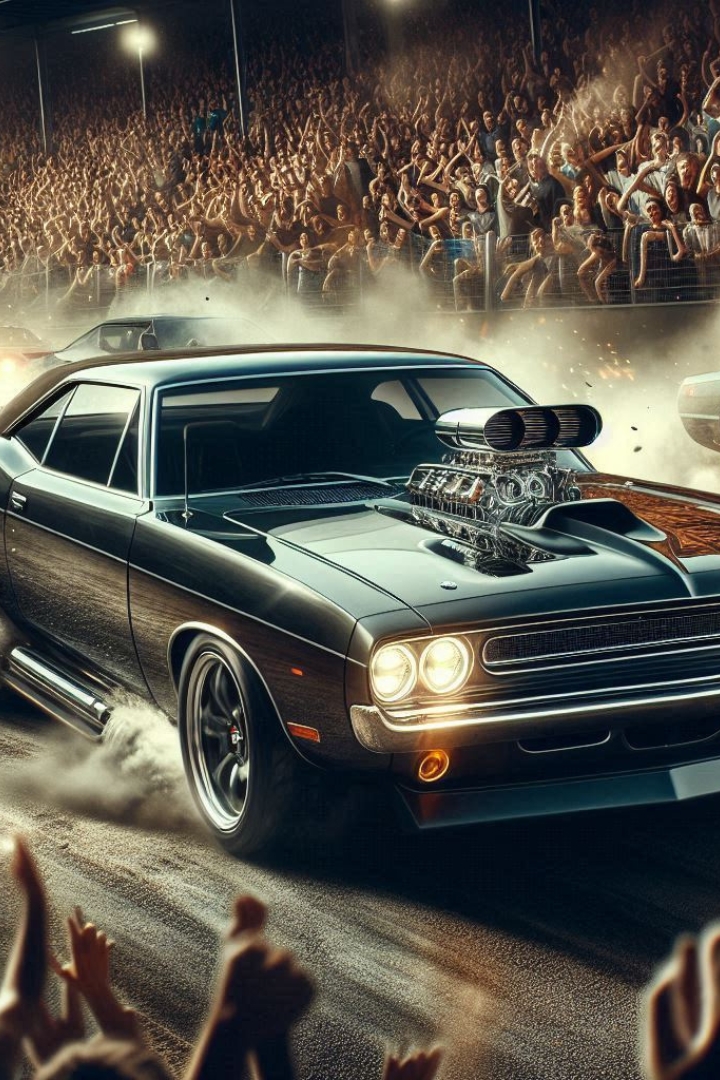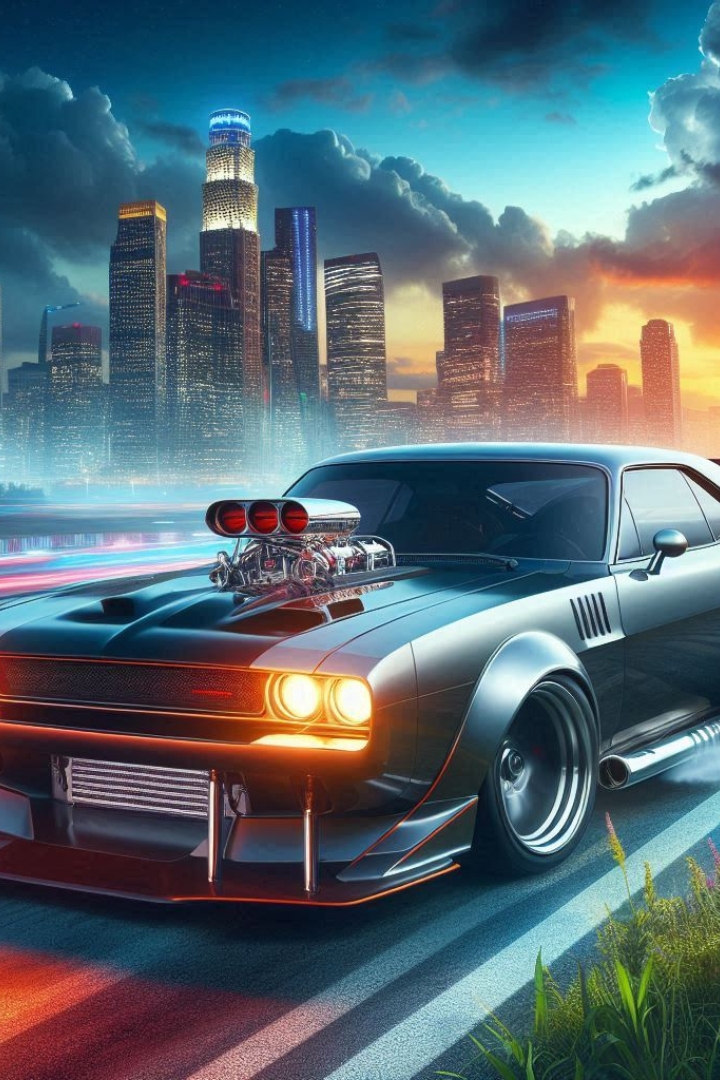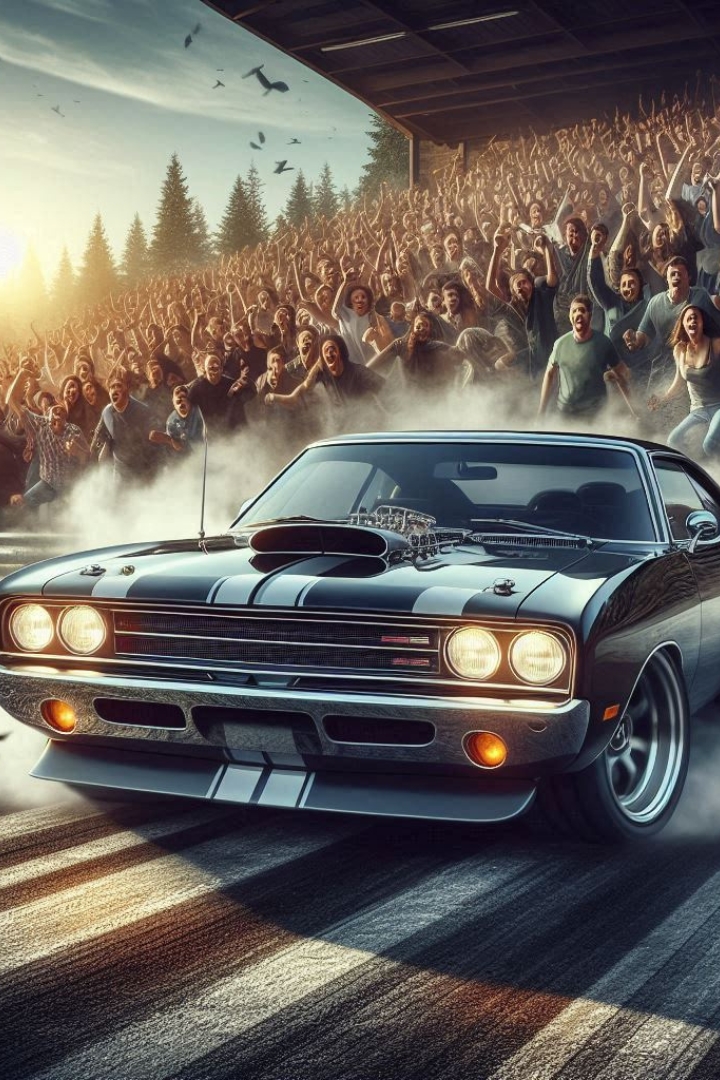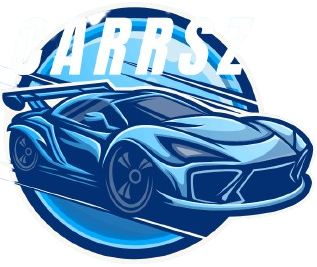Best Competition Revving Up the Track: A Look at Competition Muscle Cars 37
Table OF Contents
- Best Competition Revving Up the Track: A Look at Competition Muscle Cars 37
- Uncommon Contest Muscle Vehicles
- The Innovative Edge
- The Future of Competition Muscle Cars
- Development and Engineering of Competition Muscle Cars
- Conflict Muscle Vehicles Across Various Smart Disciplines
- Cultural Impact and Legacy
- 1. Notorious Hustling Minutes:
- 2. Dear Friendly class:
- 3. Influence on Standard society:
- The Conceivable fate of Challenge Muscle Vehicles
- 1. Joining of Cross assortment and Electric Powertrains:
- 2. Certain level Materials and Improvement:
- 3. Free and Semi-Independent Progression:
- 4. Common sense and Green Running:
- Historical Impact and Milestones
- Technological Advancements in Competition Muscle Cars
- Competition Muscle Cars in Various Racing Disciplines
- Frequently Asked Questions (FAQs) About Competition Muscle Cars
Muscle vehicles have for a long while been a picture of American vehicle capacity, getting unrefined power together with striking intend to make vehicles that are as exciting to drive as they are to regard. While numerous people consider muscle vehicles concerning street execution and regular driving, the area of challenge muscle vehicles takes this plan to a through and through new level. These are the powerful machines intended for speed as well with respect to authority on the circuit.
The Evolution of Competition Muscle Cars
Muscle vehicles started their excursion during the 1960s, a stunning time depicted through vehicles like the Pontiac GTO and the Portage Horse. These vehicles were worked for straight-line speed and were astoundingly remarkable in both road hustling and running circles. At any rate, as the game developed, so did the sales put on these vehicles. The progression from road organized muscle vehicles to reason gathered dispute machines reflects changes in fancy guidelines, improvement, and driver doubts.
In the beginning of serious running, muscle vehicles were occasionally different from their road structures with changes to upgrade execution. By the 1970s and 1980s, as running series turned out to be more unambiguous and the mission for execution appeared at new levels, makers started to energize vehicles explicitly made arrangements for hustling. These clarification created challenge muscle vehicles were equipped with design setting headways, created case, and preferable execution parts over handle the tortures of expert hustling.
Uncommon Contest Muscle Vehicles
Evade Challenger Drag Pak: The Evade Challenger Drag Pak is a cutting edge cognizance of the exemplary Challenger, organized unequivocally for hustling. With its supercharged HEMI V8 motor and race-tuned suspension, the Drag Pak is a fantastic power on the strip. It addresses the soul of model muscle while joining the most recent developments in execution advancement.
Portage Yearling Cobra Stream: Since its starting in the last piece of the 1960s, the Section Horse Cobra Fly has been a staple in the space of running. The most recent cycle go on with this heritage with a strong 5.2-liter supercharged V8 motor, state of the art suspension, and streamlined refreshes expected to convey most unmistakable execution and consistency.
Chevrolet Camaro COPO: The Chevrolet Camaro COPO (Focal Office Creation Sales) is one more conspicuous name in the area of challenge muscle vehicles. The COPO Camaro, known for its high power and lightweight plan, is an essential part in NHRA running. The cutting edge form holds the substance of its ancestors while incorporating contemporary execution refreshes.
The Innovative Edge
Rivalry muscle vehicles are seen by their supplement on improvement and arranging. These vehicles frequently include:
A-list Execution Motors: The motors in challenge muscle vehicles are planned for most ridiculous power yield. Turbocharging, supercharging, and obvious level fuel combination frameworks are common parts that assist these vehicles with accomplishing surprising rates.
Huge level Suspension Designs: To deal with the requesting of running, these vehicles are furnished with complex suspension frameworks. Versatile insurances, maintained parts, and thought calculation guarantee ideal overseeing and sufficiency.
Lightweight Materials: Weight decline is essential for execution. Challenge muscle vehicles routinely use lightweight materials like carbon fiber, aluminum, and composite sheets to overhaul speed and agility.
Streamlined Improvements: Ideal arrangement anticipate a basic part in hustling. Highlights like back wings, front splitters, and diffusers are wanted to decrease drag and expansion downforce, assisting the vehicle with remaining spread out on the track.

The Future of Competition Muscle Cars
As development continues to move, the inevitable destiny of challenge muscle vehicles looks empowering. Hybrid and electric powertrains are starting to progress into the universe of hustling, promising new levels of execution and adequacy. Associations are examining approaches to organizing electric drive with standard muscle vehicle characteristics, potentially provoking one more time of challenge vehicles that blend unrefined power in with cutting edge advancement.
Development and Engineering of Competition Muscle Cars
1. Genuine Setting and Progress:
Rivalry muscle vehicles have advanced basically since their beginning stage. During the 1960s and mid 1970s, muscle vehicles were dominatingly anticipated the road with a feature on straight-line speed. Notwithstanding, as motorsport turned out to be more directed and thought, makers started making reason created dispute translations of their muscle vehicles.
During the last piece of the 1960s, automakers were really associated with running, inciting the formation of vehicles like the Chevrolet Camaro Z28 and the Pontiac Firebird Trans Am. These models were worked for speed also concerning making due, as creators would have liked to overwhelm both drag strips and street courses.
2. Mechanical New developments:
Dispute muscle vehicles are at the extreme front line of vehicle headway. Key upgrades include:
Powertrain Developments: Current conflict muscle vehicles use supreme execution powertrains that customarily highlight turbochargers, superchargers, or evident level consistently suctioned frameworks to accomplish bewildering drive. These motors are adjusted to generally unmistakable immovable quality and execution under smart circumstances.
Huge level Transmission Designs: Hustling transmissions are anticipated quick stuff changes and toughness. Twofold hold modified transmissions and consecutive manual gearboxes are ordinary in challenge vehicles, giving quick, positive moves and further made execution.
Further created Cooling Designs: Hustling makes immense power, requiring progressed cooling frameworks. Dispute muscle vehicles frequently integrate high-limit radiators, oil coolers, and intercoolers to remain mindful of ideal motor temperatures and execution.
Telemetry and Information Acquisition: Current conflict muscle vehicles are furnished with refined telemetry structures that give predictable information on different cutoff points like motor execution, tire tension, and fuel levels. This information is basic for carrying out informed upgrades and methodologies during races.
Conflict Muscle Vehicles Across Various Smart Disciplines
1. Running:
Running is where challenge muscle vehicles really sparkle. These vehicles are made arrangements for straight-line speed increase and are outfitted with highlights, for example,
High-Firing up Motors: Motors in hustling muscle vehicles are tuned for most unmistakable draw and power at high RPMs.
Drag-Unequivocal Tires: Wide, decrepit tires are utilized to give most ludicrous hold and limit wheel turn during dispatches.
Weight Decrease: Parts like optional parlors, sound frameworks, and outrageous trim are taken determined to diminish weight and further cultivate speed increase.
Astounding models like the Evade Challenger Drag Pak and Portage Horse Cobra Stream rule the dapper scene, expanding the constraints of speed and power.
2. Street Hustling:
While running rotates around straight-line speed, street hustling stresses making due, cornering, and considering everything. Challenge muscle vehicles expected for street hustling include:
Maintained Body: To deal with the loads of cornering and fast driving, these vehicles have created case and obvious level suspension frameworks.
Streamlined Updates: Parts like front splitters, back wings, and diffusers are utilized to manage streamlined effectiveness and downforce.
Elite Execution Brakes: Street running requires unrivaled toning down execution, so contest muscle vehicles routinely utilize more noteworthy, more strong ending parts.
Models like the Chevrolet Camaro Z/28 and the Portage Foal GT4 have taken fundamental steps in street running, showing the flexibility and limits of current muscle vehicles.
3. Persistence Running:
Persistence running tests the toughness and consistency of dispute muscle vehicles over basic distances. In this field, vehicles should offset speed with faithfulness. Central issues include:
Eco-congeniality: Assurance races a large part of the time require essential fuel the heap up, so muscle vehicles might be improved for better eco-suitability without surrendering an overflow of force.
Strength: Parts are endeavored to continue on through broadened times of high-stress running. This incorporates maintained motors, transmissions, and suspension frameworks.
Driver Solace and Security: Industriousness hustling can be overwhelming, so vehicles are equipped with cutting edge flourishing highlights and content with driving conditions for expanded times of development.
4. Voyager Vehicle Running:
In voyager vehicle running, challenge muscle vehicles fight in series that recall different races for different tracks. They are wanted to be versatile and solid across various circumstances. Credits include:
Changed Execution: Voyager vehicles require a congruity between speed, managing, and undaunted quality. Conflict muscle vehicles are expected to win in these perspectives.
Compact Suspension: To adjust to different track conditions, these vehicles a significant part of the time include versatile suspension structures.

Cultural Impact and Legacy
Challenge muscle vehicles are something past most excellent execution vehicles; they are social pictures that address American vehicle arranging and hustling legacy. They address the soul of challenge, movement, and the excursion for importance. Key bits of their social effect include:
1. Notorious Hustling Minutes:
Challenge muscle vehicles have been fundamental for different huge stylish minutes. From phenomenal races to extraordinary consistent quality wins, these vehicles have made a rich history that keeps on interesting darlings and move new ages.
2. Dear Friendly class:
The energy for challenge muscle vehicles relaxes past the track. Fan social class praise these vehicles through occasions, vehicle shows, and running clubs. The participation among fans and proprietors shields the inheritance and power of muscle vehicles.
3. Influence on Standard society:
Contest muscle vehicles have changed standard society through films, TV, and music. Films like “Rapid and Enraged” and “Vehicles” have highlighted muscle vehicles detectably, further hardening their place in auto history.
The Conceivable fate of Challenge Muscle Vehicles
The predetermination of challenge muscle vehicles is ready for animating new turns of events. As auto improvement drives, we can anticipate:
1. Joining of Cross assortment and Electric Powertrains:
The presentation of cross assortment and electric powertrains could change challenge muscle vehicles, offering new degrees of execution while keeping an eye out for ecological worries. These advances could mix the raw force of standard muscle with the reasonability and improvement of current boost structures.
2. Certain level Materials and Improvement:
The utilization of best in class materials like carbon fiber and lightweight composites will keep on refreshing execution and lessen weight. These materials add to better managing and speedier lap times.
3. Free and Semi-Independent Progression:
While customary muscle vehicles are praised for their driver obligation, future models could combine sans semi includes that help with driving and update security, without compromising the strengthening driving experience.
4. Common sense and Green Running:
The motorsport business is powerfully zeroing in on sensibility. Rivalry muscle vehicles addressing things to come could harden eco-obliging movements and chips away at, guaranteeing that the enthusiasm of running occur in an earth cautious way.

Historical Impact and Milestones
. Early Beginning stages:
Challenge muscle vehicles began to happen as expected during the 20th 100 years. The 1960s saw the rising of these vehicles with models like the Pontiac GTO, Sidestep Charger, and Portage Pony, which set up to improve heading built competition variations. These early muscle vehicles were arranged areas of strength for with engines, powerful styling, and modestly direct adjustments to resolve the issues of racers and fans something similar.
2. The Muscle Vehicle Wars:
The last piece of the 1960s and mid 1970s were separate by the “Muscle Vehicle Wars,” a period of outrageous contention among makers. Vehicles like the Chevrolet Chevelle SS, Plymouth Hemi ‘Cuda, and Buick GSX were intended to beat each other, stretching the boundaries of drive and execution. This period moreover saw the development of explicit hustling structures, similar to the Shelby GT350 and the Sidestep Challenger T/A, which were expected to fight in various swank series.
3. The Post-Time frame and Resurgence:
The oil crisis of the 1970s and growing surges rules provoked a reduction in the improvement of customary muscle vehicles. In any case, the spirit of muscle vehicles hustled. The 2000s saw a resurgence of muscle vehicles with models like the Sidestep Challenger SRT, Section Pony GT500, and Chevrolet Camaro ZL1, getting nostalgic parts together with present day development. This resurgence in like manner contacted challenge vehicles, with creators using new progressions to build world class execution race vehicles.
Technological Advancements in Competition Muscle Cars
*1. Execution Updates:
Turbocharging and Supercharging: Present day challenge muscle vehicles sometimes include turbocharged or supercharged motors to on an exceptionally essential level expansion power yield. These obliged enlistment frameworks consider higher drive and power while remaining mindful of somewhat reasonable motor sizes.
Unquestionable level Motor Association Designs: Cutting edge motor association frameworks upgrade execution through exact control of fuel blend, start timing, and lift levels. This improvement accomplishes better execution and effectiveness, guaranteeing that muscle vehicles can perform continually in persistent settings.
High-Strength Materials: To deal with the type of fast hustling, rivalry muscle vehicles use materials like carbon fiber and titanium. These materials animate without adding over the top weight, which is major for both speed and strength.
**2. Flourishing and Control Elements:
Race-Grade Security Gear: Success is head in strong hustling. Challenge muscle vehicles are furnished with parts, for example, roll limits, fire cover frameworks, and unquestionable level seat handles to safeguard drivers in high-risk conditions.
Equilibrium and Strength Control: Present day muscle vehicles routinely coordinate high level foothold and steady quality control frameworks. These frameworks assist with dealing with the enormous force of these vehicles, particularly during speedy cornering and testing track conditions.
Telemetry and Information Assessment: Unquestionable level telemetry structures permit social events to screen consistent information during races. This information incorporates motor cutoff points, tire temperatures, and suspension parts, giving snippets of data that can be utilized to change execution and system.
Competition Muscle Cars in Various Racing Disciplines
**1. Hustling:
NHRA and IHRA Series: The Public Speedster Alliance (NHRA) and Overall Hot rod Association (IHRA) are key bodies in hustling. Competition muscle vehicles in these series are often uncommonly attempted to meet express class rules, similar to Expert Stock or Exceptionally Stock. These vehicles are expected for risky speed increment and max activity over short distances.
Hardships and Advancements: Hustling extends the limits of engine development and materials. Improvements like significant level smoothed out highlights, nitrous oxide systems, and lightweight composites are ordinary in the excursion for faster times and better execution.
**2. Road Running and Traveler Vehicle Hustling:
GT Running: In road hustling, contention muscle vehicles are oftentimes acclimated to fight in GT (Remarkable Visiting) orders. Vehicles like the Portage Pony GT4 and Chevrolet Camaro GT4 are examples of muscle vehicles adapted to persistence hustling, featuring additionally created dealing with, ideal plan, and durability.
Traveler Vehicle Titles: Traveler vehicle series, for instance, the English Traveler Vehicle Title (BTCC) and the World Traveler Vehicle Cup (WTCC), feature challenge muscle vehicles in high-stakes, multi-race plans. These vehicles are changed for better managing and consistency, fighting on a variety of road courses.
**3. Tirelessness Running:
24-Hour Races: Tirelessness races like the 24 Hours of Le Screens and the 24 Hours of Daytona test the durability and trustworthiness of challenge muscle vehicles. Bunches base on balancing speed with long stretch execution, regulating factors like fuel usage and tire wear.
Mechanical Changes: Diligence running as often as possible requires varieties, for instance, further created ideal plan for better eco-kind disposition and significant level cooling systems to manage extended running times. Muscle vehicles participating in these events display their adaptability and steadiness limits.

Conclusion
Challenge muscle vehicles are a show of the consistent journey for execution significance. These machines are not just about straight-line speed; they address the flawlessness of numerous long stretches of auto advancement, planning skill, and an excitement for running. Whether annihilating the drag strip or battling in various sorts of motorsport, contention muscle vehicles continue to enchant devotees and stretch the boundaries of what’s possible on the circuit. As the auto world creates, these remarkable vehicles will point of fact continue to propel, blending the custom of muscle in with the responsibility of future movements.
Frequently Asked Questions (FAQs) About Competition Muscle Cars
1. What defines a competition muscle car?
A competition muscle car is a high-performance vehicle designed specifically for racing or competitive motorsports. Unlike standard muscle cars, which are built primarily for street use, competition muscle cars are engineered with advanced technologies, enhanced durability, and specialized modifications to excel in racing environments. This includes improvements in power, handling, aerodynamics, and safety.
2. How do competition muscle cars differ from street muscle cars?
Competition muscle cars differ from street muscle cars in several ways:
- Performance: Competition muscle cars are optimized for higher power outputs and better performance under racing conditions. They often feature specialized engines, advanced suspension systems, and lightweight materials.
- Modifications: These cars are equipped with race-specific components such as roll cages, racing seats, and safety harnesses, which are not typically found in street versions.
- Regulations: Competition muscle cars are built to meet the specifications and regulations of various racing series or classes, which can include restrictions on engine size, weight, and other factors.
3. What types of racing do competition muscle cars participate in?
Competition muscle cars participate in a variety of racing disciplines, including:
- Drag Racing: Focuses on straight-line acceleration over short distances. Examples include the NHRA and IHRA drag racing series.
- Road Racing: Involves racing on road courses and tracks with varying layouts. Examples include GT racing and touring car championships.
- Endurance Racing: Tests durability and performance over long distances, such as the 24 Hours of Le Mans and the 24 Hours of Daytona.
- Touring Car Racing: Features races on closed circuits with a focus on consistency and performance across multiple events.
4. What are some iconic competition muscle cars?
Several competition muscle cars have gained iconic status, including:
- Dodge Challenger Drag Pak: Designed for drag racing with a supercharged HEMI engine.
- Ford Mustang Cobra Jet: A dominant force in drag racing with a powerful supercharged engine.
- Chevrolet Camaro COPO: Known for its high horsepower and lightweight design, used in various drag racing classes.
- Plymouth Hemi ‘Cuda: Famous for its performance in the 1970s, particularly in drag racing.
5. How have technology and regulations impacted competition muscle cars?
Technological advancements have significantly impacted competition muscle cars by introducing new performance features such as turbochargers, advanced suspension systems, and lightweight materials. Regulations in various racing series have also influenced design choices, leading to innovations in aerodynamics, safety features, and engine management systems to comply with rules and enhance performance.
6. What role do hybrid and electric technologies play in the future of competition muscle cars?
Hybrid and electric technologies are beginning to play a role in the future of competition muscle cars. Hybrid systems can provide additional power and improve fuel efficiency, while electric powertrains offer instant torque and high performance. Manufacturers are exploring these technologies to enhance the performance and sustainability of competition muscle cars while maintaining their traditional appeal.
7. Are competition muscle cars used for anything other than racing?
While competition muscle cars are primarily designed for racing, they often serve as a platform for showcasing automotive technology and engineering prowess. Additionally, they can be seen in promotional events, car shows, and sometimes even in public appearances, where their performance and design are highlighted.
8. How can I get involved with competition muscle cars as an enthusiast?
Enthusiasts can get involved with competition muscle cars by:
- Joining Car Clubs: Many clubs focus on muscle cars and offer events, racing opportunities, and social gatherings.
- Attending Races and Events: Watching races and participating in car shows can provide a deeper understanding and appreciation of competition muscle cars.
- Restoring and Modifying Cars: Restoring classic competition muscle cars or modifying modern ones for track use can be a fulfilling hobby.
- Volunteering or Working in Motorsport: Engaging with racing teams or events can offer firsthand experience and insight into the world of competition muscle cars.
9. What are the common challenges faced by competition muscle car teams?
Competition muscle car teams often face challenges such as:
- Maintaining Performance: Ensuring consistent performance and reliability under the stress of racing.
- Adhering to Regulations: Meeting the technical and safety regulations of various racing series.
- Managing Costs: Racing can be expensive, with costs related to parts, maintenance, and travel.
- Continuous Improvement: Constantly developing and refining technology to stay competitive in evolving racing environments.
10. How do competition muscle cars contribute to automotive innovation?
Competition muscle cars drive automotive innovation by pushing the limits of performance and technology. The advancements made in racing often trickle down to consumer vehicles, influencing the development of new technologies, materials, and engineering practices. This includes improvements in engine technology, safety features, aerodynamics, and overall vehicle design.
